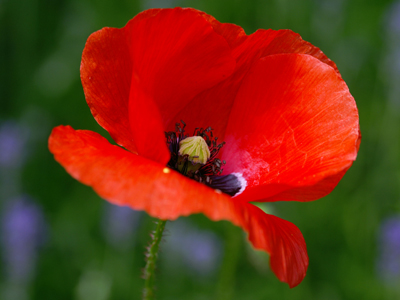
Ask the AI Tutor
Need help with Calling on the Empire? Ask our AI Tutor!
AI Tutor - Lucy
Connecting with Tutor...
Please wait while we establish connection

Britain called on its Empire to help during the First World War.
Calling on the Empire
Britain’s continuing need for troops caused it to summon armies from all corners of the Empire. Men from around the world were brought to Europe to fight in the Great War and to serve the 'Mother Country'.
1 .
The ANZAC's first action was in Gallipoli and the anniversary of their landing is remembered in Australia and New Zealand. On what date does it fall?
25th March
25th April
25th May
25th June
ANZAC day is a public holiday and national day of remembrance in both countries
2 .
During WWI the Nepalese government placed units at the disposal of British High Command for service on all fronts. What were these units known as?
Gurkhas
Nepalese
Burkhas
Tibetans
200,000 Gurkhas fought in the British Army during World War One. They suffered 20,000 casualties and received 2,000 gallantry awards
3 .
Troops from Australia and New Zealand were collectively known as the ANZACs. What do these initials stand for?
Armies of New Zealand, Australia and Canada
Australia, New Zealand And Company
Australian and New Zealand Army Chaps
Australia and New Zealand Army Corps
The ANZACs were first formed in Egypt when the Australian 1st Division and the New Zealand and Australian Division were merged under the command of Lieutenant General William Birdwood, a British officer
4 .
The first involvement of Australians in the War took place where?
New Guinea
Gallipoli
The Somme
North Africa
In September 1914 the Australian Naval and Military Expeditionary Force attacked German territories on the island. They were victorious and the Germans surrendered on September 17th
5 .
The most costly action for South Africans on the Western Front was which disastrous battle?
Battle of Longueval
Battle of Pozieres Ridge
Battle of Guillmont
Battle of Delville Wood
Of the 3,153 men who entered the wood, only 780 survived. Three-quarters of them did not make it
6 .
The Australian Flying Corps Number 4 Squadron was the most successful squadron in all of France. How many enemy planes did it take down?
199 planes
166 planes
133 planes
111 planes
On 29th October 1918, 15 Australian Snipe fighters took on 60 German Fokker planes. Ten Fokkers were shot down and only one Snipe was lost
7 .
620,000 Canadians were mobilised for war. What percentage of these became casualties?
9% were casualties
19% were casualties
29% were casualties
39% were casualties
67,000 Canadians were killed and 173,000 wounded in battle
8 .
Within the first month of the War, the Indian Army took part in which battle?
The Siege of Antwerp
The First Battle of Ypres
The Battle of Loos
The Battle of Verdun
The Garwhal Rifles took part in the first trench raid of the war and one of their men, Khudadad Khan, became the first Indian to be awarded a Victoria Cross
9 .
The four Canadian Divisions were assembled into the Canadian Corps for which battle, which began on April 9th 1915?
Battle of Verdun
Battle of Cambrai
Battle of Vimy Ridge
Battle of Passchendaele
The 10th Canadian Brigade, supported by artillery fire, attacked entrenched German positions and by nightfall on April 12th, Vimy Ridge was in Canadian hands and the battle was over
10 .
How many Indian soldiers served on the Western Front?
40,000
100,000
140,000
180,000
This may seem like a lot but 700,000 Indians fought for the British in the Middle-East against the Turks
**Unlimited Quizzes Await You! 🚀**
Hey there, quiz champ! 🌟 You've already tackled today's free questions.
Ready for more?
Ready for more?
🔓 Unlock UNLIMITED Quizzes and challenge yourself every day. But that's
not all...
not all...
🔥 As a Subscriber you can join our thrilling "Daily Streak" against other
quizzers. Try to win a coveted spot on our Hall of Fame Page.
quizzers. Try to win a coveted spot on our Hall of Fame Page.
Don't miss out! Join us now and keep the fun rolling. 🎉
**Unlimited Quizzes Await You! 🚀**
Hey there, quiz champ! 🌟 You've already tackled today's free questions. Ready for more?
🔓 Unlock UNLIMITED Quizzes and challenge yourself every day. But that's not all...
🔥 As a Subscriber you can join our thrilling "Daily Streak" against other quizzers. Try to win a coveted spot on our Hall of Fame Page.
Don't miss out! Join us now and keep the fun rolling. 🎉






